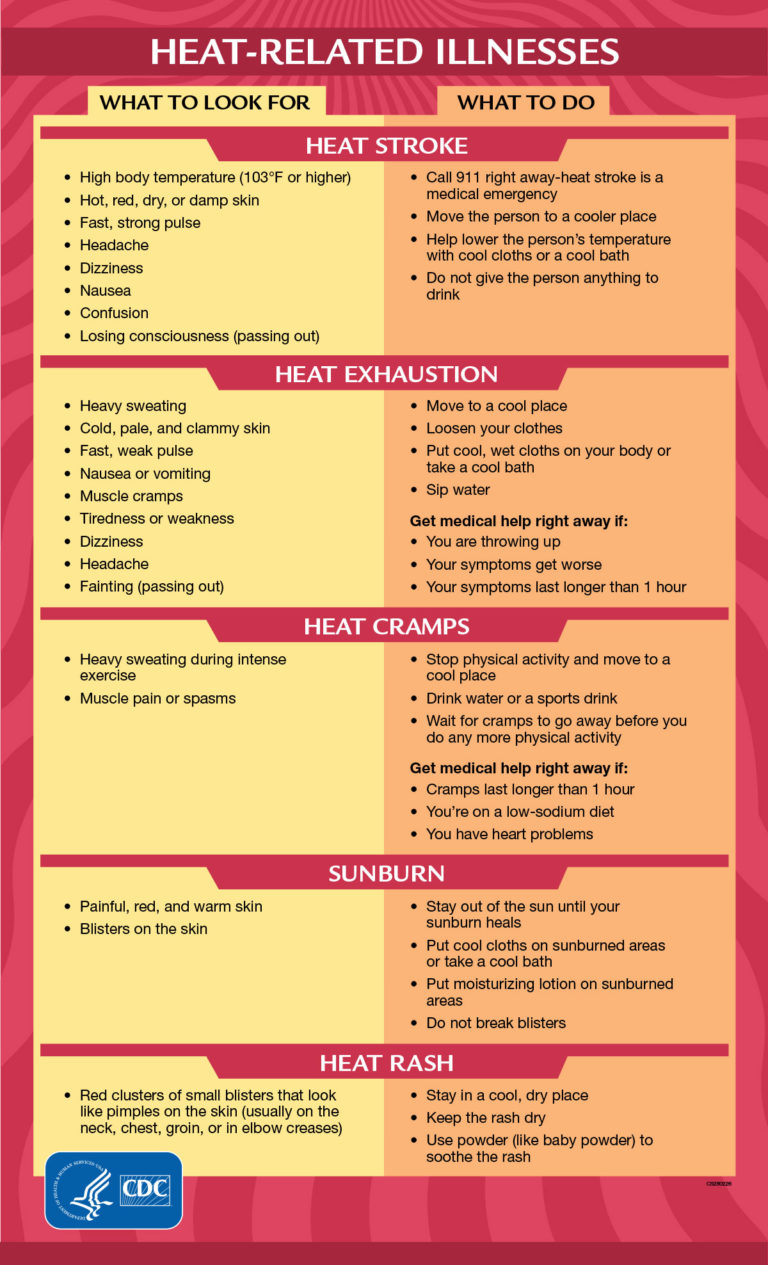From the August Mercy Occupational Medicine eNewsletter
As temperatures soar in the summer months, heat-related illness should be a top concern for workers and employers alike. Heat-related illnesses — including heat exhaustion and heat stroke — occur when the body’s temperature rises too high, causing symptoms like headaches, dizziness, cramps, fainting, rapid heartbeat and disorientation.
Although heat-related illnesses are preventable, thousands of American workers become sick from occupational heat exposure every year — and some cases are fatal. These illnesses can affect anyone, regardless of age or physical condition. OSHA’s Heat Illness Prevention campaign seeks to educate employers and workers about the dangers of working in extreme heat or humidity.
In fact, under OSHA law, employers are responsible for providing workplaces free of known safety hazards — and this includes protecting workers from extreme heat. Any employer whose workers may be exposed to high temperatures should establish a complete heat illness prevention program. Below are some tips employers can use to prevent heat-related illnesses and identify potential overexposure in the workplace.
- Provide workers with water, rest and shade. Allow new or returning workers to gradually increase workloads and take more frequent breaks as they acclimatize and build a tolerance for working in the heat.
- Plan for emergencies. Train managers, supervisors and workers on the prevention and recognition of heat-related illness.
- Monitor workers for signs of illness. Have a documented process for monitoring workers exposed to high heat conditions.
Is my workforce at risk for heat-related illness?
While extreme temperatures may be a more obvious area of concern for those who primarily work outdoors, many indoor occupations present heat-related hazards as well.
Outdoors, some of the at-risk fields include agriculture, construction (especially in roadwork and roofing), landscaping, mail and package delivery, oil and gas well operations.
Indoors, hazardous conditions can occur in bakeries, kitchens and laundries (anywhere with indoor heat-generating appliances); electrical utilities (particularly boiler rooms); fire service; iron and steel mills and foundries; manufacturing with local heat sources like furnaces (i.e. paper products or concrete); and warehousing.
Personal Risk Factors
Some workers are more susceptible to heat-related illnesses due to personal risk factors, including medical conditions, lack of physical fitness, previous episodes of heat-related illness, alcohol consumption, drugs, and use of certain medications. Employers should factor in personal risk factors to help prevent heat-related illnesses for all employees, regardless of their heat tolerance levels.
Workers who have not recently been physically active and/or spent time in warm or hot environments will need time to build tolerance to the heat. Employers should encourage all new or returning workers to:
- consume adequate fluids (water and sports drinks).
- work shorter shifts.
- take frequent breaks.
- quickly identify and report any heat illness symptoms.
Heat-related illnesses can have a substantial cost to both workers and employers. Heat stress can cause fine motor performance to deteriorate, even in acclimatized individuals. Heat illness can contribute to decreased performance, lost productivity due to illness and hospitalization, and possibly even death. OSHA encourages water, rest, and shade as prevention and treatment for heat-related illness.
Ask how Mercy Occupational Medicine can help you evaluate your company’s heat-related protocols
Source: OSHA.gov, CDC.gov


